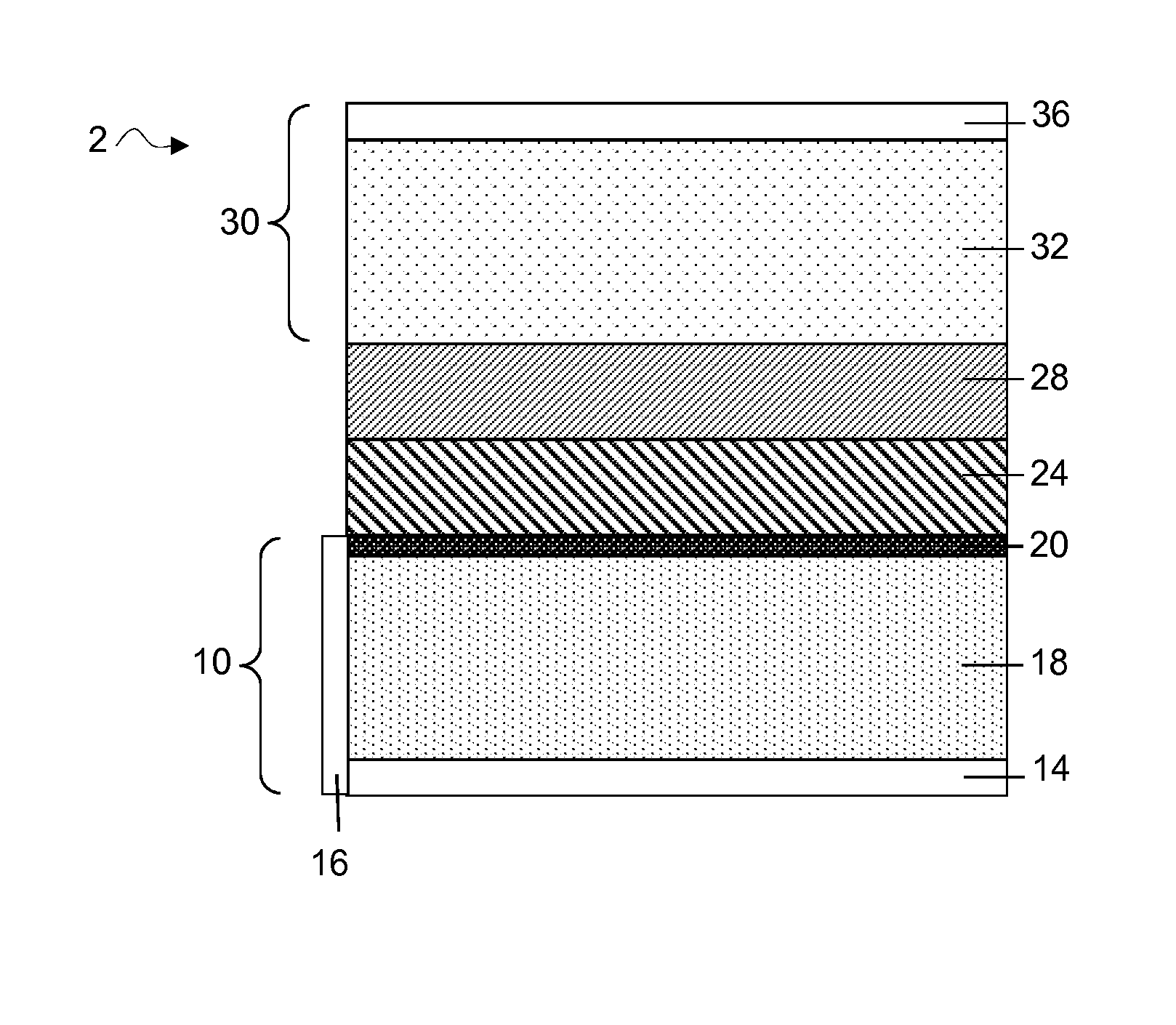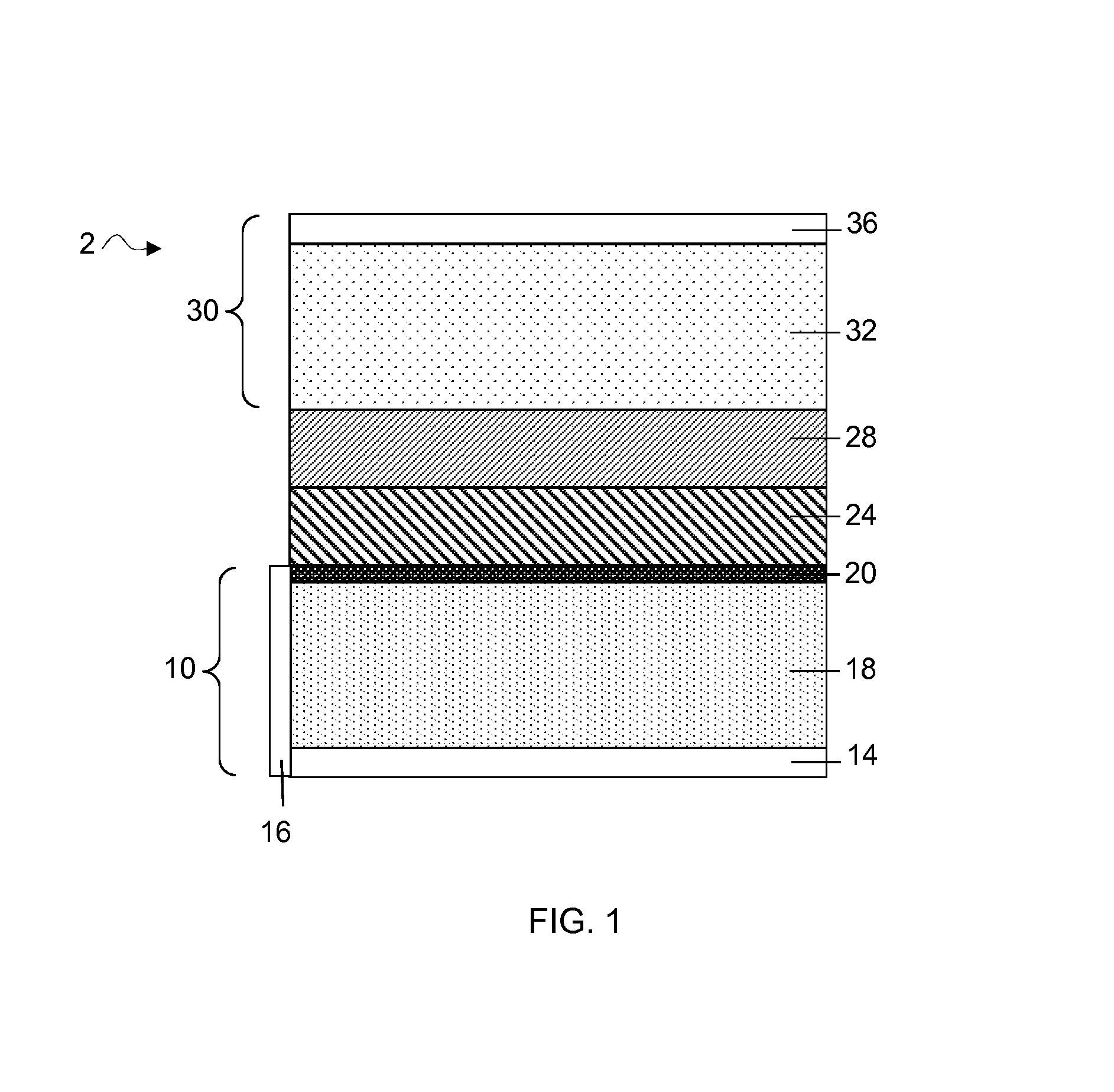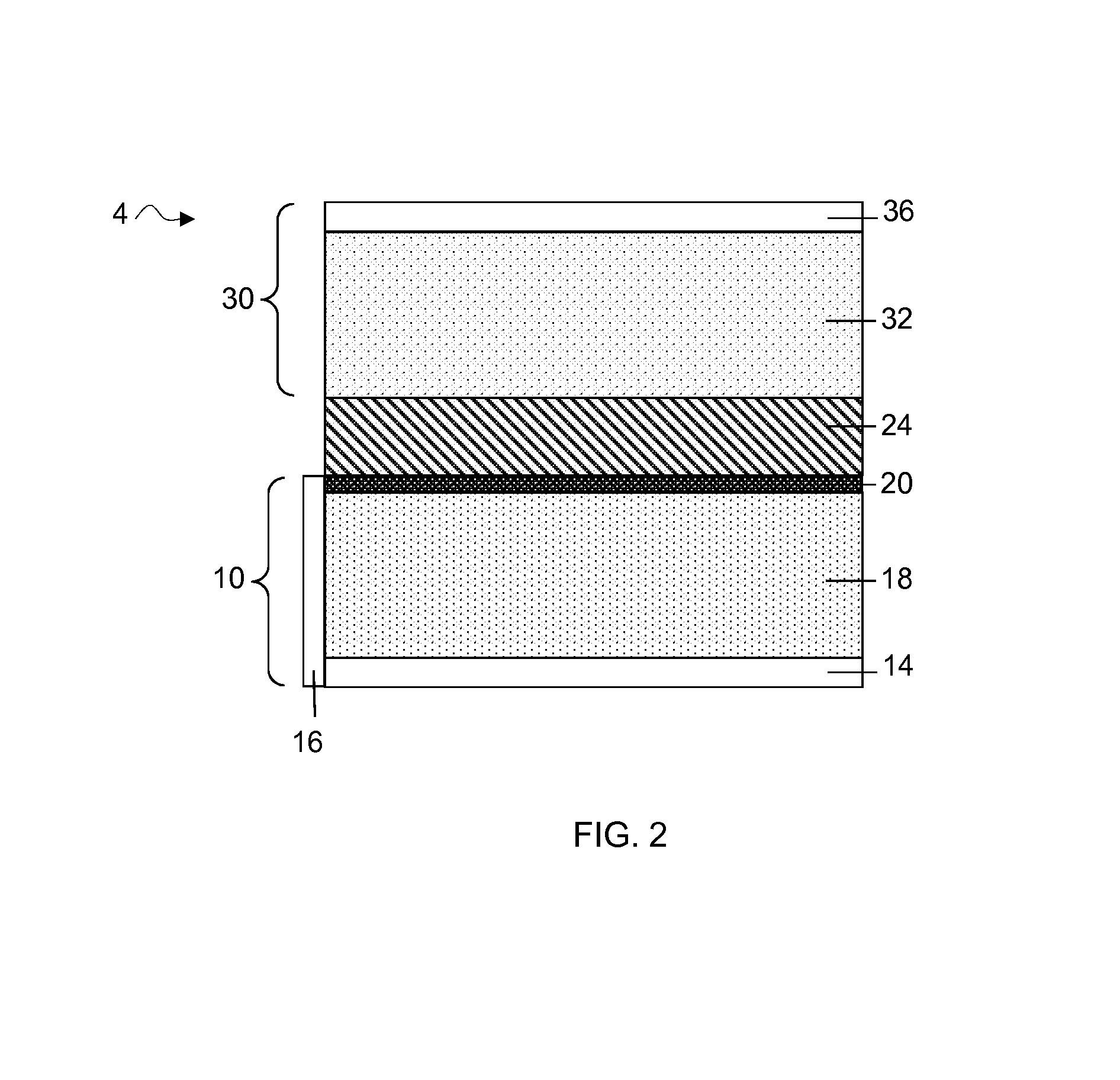Separation of electrolytes
a technology of electrolyte and lithium battery, which is applied in the direction of non-aqueous electrolyte cells, cell components, sustainable manufacturing/processing, etc., can solve the problems of lithium anode corrosion, lithium anode cycle-ability and stability expense,
- Summary
- Abstract
- Description
- Claims
- Application Information
AI Technical Summary
Benefits of technology
Problems solved by technology
Method used
Image
Examples
example 1
Synthesis of a Gel Polymer Electrolyte for a Battery Including a Lithium Anode
[0100]A gel polymer electrolyte was formed by mixing 8.9 g of electrolyte (dimethoxyethane (40%), dioxolane (40%), lithium bis-(trifluoromethylsulfonyl)imide (16%), lithium nitrate(4%)), 1 g of 1-methoxy-2-(4-vinylphenyl)methoxyethane monomer, 0.1 g of divinylbenzene crosslinking agent, and 0.01 g AIBN. The mixture was heated at 50° C. for 39 hours to obtain a transparent gel polymer electrolyte. This electrolyte had an ionic conductivity of 5.2 mS.
example 2
Synthesis of a Gel Polymer Electrolyte for a Battery Including a Lithium Anode
[0101]A gel polymer electrolyte was formed using the method described in Example 1 except the mixture was heated at 100° C. for 6 minutes. This electrolyte had an ionic conductivity of 5.1 mS.
example 3
A Cell Having Low / Zero Polysulfide Solubility Electrolyte
[0102]Mixture of 65 wt % of diethoxymethane (DEM), 33 wt % of lithium imide salt, and 2 wt % of LiNO3 was formed. The above electrolyte (7.6 g) was added to a standard design cell (cathode containing 73 wt % sulfur, 16 wt % carbon XE2, 6 wt % carbon Ketjenblack and 5 wt % polyethylene; lithium metal anode and separator). The cells were operated by being charged to 2.5 V at 50 mA and discharged to 1.7 V at 50 mA. After 10 cycles, a first set of cells were disassembled. ESM images of the Li anode showed very compact metallic lithium deposits. In addition, the first set of cells did not swell. A second set of cells were allowed to cycle at +50° C. for 140 hours. The second set of cells did not show gas generation.
[0103]This example shows that cells having a relatively low / zero polysulfide solubility electrolyte positioned had improved anode cycle-ability and less gas generation compared to cells with a relatively high polysulfide...
PUM
| Property | Measurement | Unit |
|---|---|---|
| temperatures | aaaaa | aaaaa |
| specific energy | aaaaa | aaaaa |
| average diameter | aaaaa | aaaaa |
Abstract
Description
Claims
Application Information
 Login to View More
Login to View More - R&D
- Intellectual Property
- Life Sciences
- Materials
- Tech Scout
- Unparalleled Data Quality
- Higher Quality Content
- 60% Fewer Hallucinations
Browse by: Latest US Patents, China's latest patents, Technical Efficacy Thesaurus, Application Domain, Technology Topic, Popular Technical Reports.
© 2025 PatSnap. All rights reserved.Legal|Privacy policy|Modern Slavery Act Transparency Statement|Sitemap|About US| Contact US: help@patsnap.com



